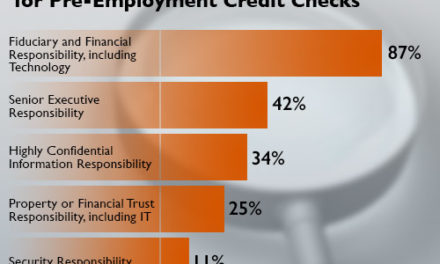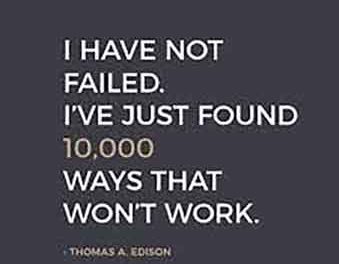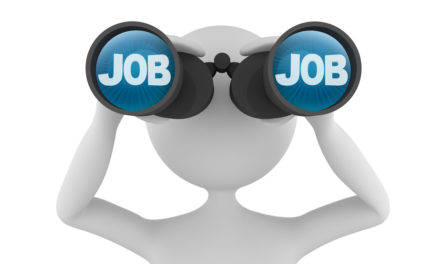2015/10/03 5:59:22 pm
Before you open your mouth, your physical presentation — dress, grooming, posture, facial expression, eye contact, handshake — will create an impact. Researchers say physical performance is responsible for 55 percent of the effects we create. Voice — tone, speed and pitch — account for another 38 percent of our impact. The actual words we speak are responsible for only seven percent of the impression we make. Researchers also tell us that they decide to reject an applicant within the first three minutes. Remember: you don’t get a second chance to create an excellent first impression.
How You Dress
As part of your research, pay attention to how people in the organization dress and look, particularly those who will be interviewing you and those in the positions you’re applying. Each organization has images that communicate status and power. For men, slacks and a co-ordinated sports jacket with a shirt and tie may be very appropriate in one organization.
Nothing too short.
Nothing too bright.
Nothing too low.
And nothing too tight.
In his 1973 book, Dress For Success, John T. Molloy advocated that women wear business suits to emulate men in positions of power. Also, the tailored suit says: “I’m here to work, not to attract or distract men.”
Your choice of style, colour, and fabric can affect how you assess you for suitability. Get some input from trusted friends, work colleagues or mentors. Use discretion with perfume, jewellery, makeup, shoes and other accessories. Solid colours tend to be better than busy, bold prints for a job interview. Be conservative and professional. John Molloy still advocates that women wear their hair short and neat or pulled back off the face and neck for a more business-like look.
Your Body Talks
It’s not enough to have a right look. The professional image you’ve engineered may conflict with the way you walk, stand or sit. Your non-verbal communications speak louder than your words.
As part of your preparation, start paying attention to people around you and on TV. Notice how you respond to body language and choose the behaviours you want to incorporate into your image.
1. Keep head, shoulders and back erect. Walk with a sense of purpose. Communicate energy in your gait.
2. Show friendliness, interest, and confidence in your facial expression with a smile and direct eye contact. In our culture, the lack of eye contact can often mean a lack of honesty, shyness, or lack of confidence. Anticipate how your interviewer might interpret your mannerisms and ensure that your body is saying what you want it to
3. Learn how to shake hands if this skill isn’t already a part of your social behaviour. Take the initiative and extend your hand without waiting for the interviewer to offer his/her. It shows confidence. There is a bonding and breaking down of barriers that occur when we touch physically with a professional, friendly handshake.
4. In the interview, sit erect and be comfortable, feet flat on the floor, hands/arms on your lap or the arms of your chair and is an open position. It says that you’re relaxed, confident and comfortable. Hands or arms crossed over the chest or stomach are often interpreted as defensiveness, hostility, disagreement, or being closed.
5. Leaning slightly forward in an interview shows interest.
6. Appropriate hand and arm gestures can add emphasis and credibility to your verbal presentation. But don’t overdo your gestures.
7. If you tend to wiggle, fidget, or play with anything you have in your hands, , stay conscious of that tendency and stop yourself. Practise this and get feedback from a friend.
- If you’re positioned too far from or too close to the interviewer or it’s difficult to make eye contact with the panel, take the initiative to move your chair.
Voice
Your voice has the potential to sabotage you. How you use speech will have a significant influence on the impact you create. Observe what sounds you like as you watch TV, listen to the radio or interact with friends, family, and co-workers. What is it about the tone, the speed and the pitch that’s appealing? Be aware of what qualities or faults you attribute to people based on what you hear in their voices.
Some female applicants are rejected because of whiny, squeaky, little girl voices or for speaking too quietly. Unless you have a disability-related to your vocal mechanism, you have the power to change the way you use your voice to be more productive. Get some feedback from trusted friends or family on how you sound now and how you can communicate more effectively.
What You Say
Problems with what you say in an interview are frequently associated with:
– inadequate preparation
– poor knowledge
– rambling
– trying to respond the way you think your interviewer wants you to meet (abnormal response).
Listen to yourself on a tape recorder. If you feel you need to improve, practise on tape so you can hear the progress. The best way to prepare is to anticipate questions and write down your responses to them. Next, practise speaking your answers.
© Wordscapes® (David Turner). All Rights Reserved.
[vc_row][vc_column][/vc_column][/vc_row]




